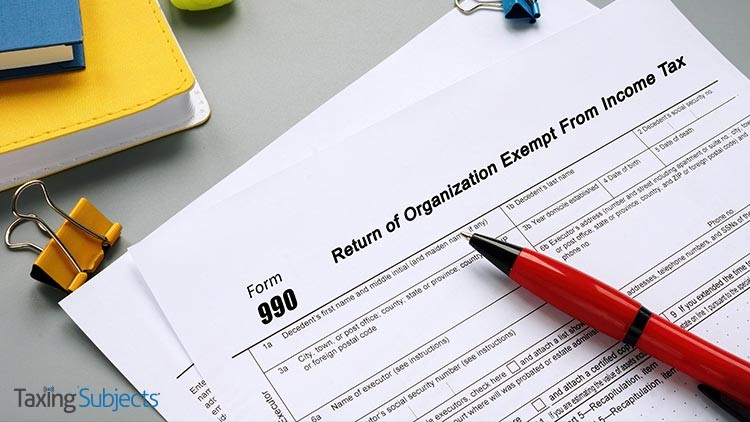by | May 15, 2021 | Tax Tips and News
With restaurants beginning to open more fully due to a break in the coronavirus pandemic, employees in the food and beverage industry are soon likely to have a lot more to report on their taxes: Tips.
That’s why the Internal Revenue Service is reminding taxpayers that that tips should be included in gross income when filing their tax return ahead of the May 17 deadline. The agency identifies three specific examples:
- Tips directly from customers.
- Tips added using credit cards.
- Tips from a tip-splitting arrangement with other employees.
Reporting, however, doesn’t stop there. Tips that are made with something other than cash—tickets or free passes for example—have value and, as such, must be included in income.
The Big 3 for tipped employees
If a worker regularly gets tips, there are three things the IRS expects them to do. All are aimed at keeping track and reporting tip income to the IRS.
Write it Down – The first thing employees should do is keep a daily record of their tips. One way to do that is to use Form 4070A, Employee’s Daily record of Tips, which is included in Publication 1244.
Besides the information on the Form 4070A, workers need to keep a record of any non-cash tips they get, including the date and value of the non-cash tip. Remember that a non-cash tip can be any item of value that’s offered as a tip.
While non-cash tips don’t have to be reported to the employer, they do have to be reported to the IRS.
Report Tips to the Employer – All cash tips a worker receives in any month have to be reported to the employer; they’re subject to Social Security and Medicare taxes. If the employee has less than $20 in tips for the month and a single employer, the tips don’t have to be reported and no taxes have to be withheld.
Employees have to notify their employer of their cash tips (which include those made on credit card statements) in writing. No particular form has to be used, but the report has to include some standard information:
- Employee signature,
- Employee’s name, address, and social security number,
- Employer’s name and address (establishment name if different),
- Month or period the report covers, and
- Total of tips received during the month or period.
The IRS says both directly tipped employees and those who are tipped indirectly must report tips to their employer.
To find out if tip income is taxable, visit the Interactive Tax Assistant on the IRS website.
Other resources include Tip Record-Keeping and Reporting; Publication 1244, Employee’s Daily Record of Tips and Report to Employer; and Publication 531, Reporting Tip Income.
Sources: Here’s what taxpayers need to know about reporting tip income on their tax return; Tip Recordkeeping & Reporting
– Story provided by TaxingSubjects.com
by | May 14, 2021 | Tax Tips and News
If you live in the Southeast, long lines and questionable containers are a sad reality at many local gas stations. The temporary Colonial Pipeline disruption caused a rush on fuel this week, leading many in the region to hoard gasoline.
Luckily, our post-apocalyptic future will have to wait.
In addition to the pipeline resuming operations, the IRS today announced that—from May 7 to May 21—they will provide relief for the dyed diesel fuel penalty. The relief applies if the fuel “is sold for use or used on the highway” and someone (whether the seller or vehicle operator) pays the motor fuel excise tax for diesel (24.4 cents per gallon).
The IRS explains that “ordinarily, dyed diesel fuel is not taxed, because it is sold for uses exempt from excise tax, such as to farmers for farming purposes, for home heating use, and to local governments.” And the penalty for non-approved use is the greater of $10 per gallon or $1,000 plus the excise fuel tax.
Further, the agency notes that it “will not impose penalties for failure to make semimonthly deposits of this tax,” pointing taxpayers to Publication 510, Excise Taxes, for more information.
Which states get the dyed diesel fuel penalty relief?
The IRS says that, currently, twelve states and the District of Columbia will benefit from the retroactive dyed diesel fuel penalty relief, including:
- Alabama
- Delaware
- Georgia
- Florida
- Louisiana
- Maryland
- Mississippi
- North Carolina
- Pennsylvania
- South Carolina
- Tennessee
- Virginia
Finally, the IRS says it “is closely monitoring the situation and will provide additional relief as needed.”
Source: IR-2021-108
– Story provided by TaxingSubjects.com
by | May 13, 2021 | Tax Tips and News
Most Americans think that when it comes to paying income tax, Social Security benefits are off-limits. And in most cases, that may be true, but add a little income on the side, and those non-taxable benefits can shift onto the taxable side of the spreadsheet.
Social Security benefits include monthly retirement payments, as well as survivor and disability benefits. Supplemental security income payments (SSI), however, are not taxable—so they’re not included.
So, what’s taxable and what’s not? That depends on the income and filing status of the taxpayer.
Publication 915, Social Security and Equivalent Railroad Retirement Benefits, sums it up this way:
“If the only income you received during 2020 was your Social Security or the SSEB portion of tier 1 railroad retirement benefits, your benefits generally aren’t taxable and you probably don’t have to file a return. If you have income in addition to your benefits, you may have to file a return even if none of your benefits are taxable.”
That’s an oversimplification, of course. In order to know if benefits are taxable, taxpayers should take half of their Social Security benefits for the year and add it to any other income they had.
“Other income” includes wages, pensions, interest, dividends, and capital gains.
If the total is more than $25,000 and the taxpayer is single, part of their Social Security benefits may be taxable.
Taxpayers who are married and file jointly should take half of their Social Security – and half of their spouse’s Social Security – and add the two amounts to their other income. If the total exceeds $32,000, then a part of their Social Security benefits may be taxable.
When making the comparison, Publication 915 says taxpayers shouldn’t reduce their other income by any exclusions for interest from qualified U.S. savings bonds, employer-provided adoption benefits, interest on education loans, foreign earned income or foreign housing, or income earned by bona fide residents of American Samoa or Puerto Rico.
Some could owe tax on a larger percentage of their Social Security benefits
Generally, up to half of a taxpayer’s Social Security benefits could be considered taxable if the taxpayer is:
- Filing single, head of household, or qualifying widow or widower with $25,000 to $34,000 income.
- Married filing separately and lived apart from their spouse for all of 2020 with $25,000 to $34,000 income.
- Married filing jointly with $32,000 to $44,000 income.
However, taxpayers who fit the following situations could have as much as 85% of their Social Security benefits considered taxable:
- Filing single, head of household, or qualifying widow or widower with more than $34,000 income.
- Married filing jointly with more than $44,000 income.
- Married filing separately and lived apart from their spouse for all of 2020 with more than $34,000 income.
- Married filing separately and lived with their spouse at any time during 2020.
Publication 915 says some U.S. citizens living abroad are exempt from American income tax on their benefits, but only if they live in these countries:
- Canada
- Egypt
- Germany
- Ireland
- Israel
- Italy (You must also be a citizen of Italy for the exemption to apply)
- Romania
- United Kingdom
The IRS website, IRS.gov, has an Interactive Tax Assistant that can help answer the question Are my Social Security or Railroad Retirement Tier 1 Benefits Taxable?
Sources: IRS Tax Tip 2021-66; Publication 915: Social Security and Equivalent Railroad Retirement Benefits.
– Story provided by TaxingSubjects.com
by | May 12, 2021 | Tax Tips and News
As you might have experienced first-hand, those with unused funds from a 2020 dependent care assistance program (DCAP) could have questions about newly allowed carryovers and whether those funds are taxable. Well, the Internal Revenue Service this week issued Notice 2021-26 to clear things up.
How did the pandemic affect dependent care assistance program funds?
The coronavirus pandemic has left a lot of taxpayers unable to use some of the money they set aside for DCAPs in 2020 and 2021 and this latest guidance seems aimed at fixing the problem.
Usually, carryovers of DCAP amounts aren’t permitted. In 2020, though, national legislation was passed allowing employers to tweak their DCAP plans so that carryover of unused program amounts are now allowed in 2021 and 2022. In addition, the law allowed employers to extend the period in which claims can be incurred to the plan years over that same 2021-2022 time frame.
Notice 2021-26 also says carryover amounts actually used for dependent expenses during the extended claims period would be excluded from income:
“Consequently, this notice clarifies that DCAP benefits that would have been excluded from income if used during the taxable year ending in 2020 or 2021, as applicable, remain eligible for exclusion from the participant’s gross income and are disregarded for purposes of application of the limits for the subsequent taxable years of the employee when they are carried over from a plan year ending in 2020 or 2021 or permitted to be used pursuant to an extended claims period.”
Does the IRS have additional guidance?
The American Rescue Plan Act raised the exclusion of employer-provided dependent care benefits to $10,500 from its original $5,000. Notice 2021-26 has a number of examples of how this new exclusion limit can work with the new guidance in real-world situations.
In February, Notice 2021-15 explained that if an employer embraced a carryover or extended claims period, annual limits for DCAP amounts apply to the money that is contributed, not to the amounts that are reimbursed or available in a plan or a calendar year.
This earlier guidance meant that DCAP participants can continue to contribute the maximum amounts to their plans through 2022.
For more on Coronavirus-related tax relief, visit IRS.gov.
Source: IR-2021-105
– Story provided by TaxingSubjects.com
by | May 11, 2021 | Tax Tips and News
The Internal Revenue Service is reminding some tax-exempt organizations that they face the same May 17 filing deadline as regular income tax filers.
The IRS says that the May 17 date applies to “tax-exempt groups that operate on a calendar-year (CY) basis” and file any of these returns:
- Form 990-series annual information returns (Forms 990, 990-EZ, 990-PF, 990-BL)
- Form 990-N, Electronic Notice (e-Postcard) for Tax-Exempt Organizations Not Required to File Form 990 or Form 990-EZ
- Form 990-T, Exempt Organization Business Income Tax Return (other than some trusts)
- Form 4720, Return of Certain Excise Taxes Under Chapters 41 and 42 of the Internal Revenue Code
As for how the forms need to be filed, the agency notes that “organizations filing a Form 990, 990-PF or 990-N for CY2020 must file their returns electronically,” while “organizations filing Form 990-EZ for CY2020 received transitional relief and may file electronically or in paper.”
The IRS says these tax-exempt organizations should file now if they haven’t already done so. Luckily, the agency has put together a series of pre-recorded online workshops that can help these groups meet their filing requirements.
What if a tax-exempt organization needs an extension?
If a tax-exempt group needs more time to file its information return, they can request an automatic extension with Form 8868, Application of Time to File an Exempt Organization Return.
Form 8868 gives the organization a six-month extension on filing. If any tax is due, however, it’s still due on May 17—just as is the case with individual returns.
And while Form 8868 can be filed electronically or on paper, the IRS encourages those who seek an extension to file electronically for fastest processing.
What happens if a tax-exempt organization doesn’t file?
While filing most of the 990-series forms is straightforward, the decision not to file has its downside. Tax-exempt groups failing to file their Form 990 series for three straight years automatically lose their tax-exempt status.
The IRS says it’s still experiencing delays in processing paper forms, so it’s asking tax-exempt filers to send in their 990-EZ electronically. This will speed up transmission—and could help the group to avoid auto-revocation if they didn’t file returns for calendar years 2018 and 2019.
When an organization has its tax-exempt status auto-revoked, a notice is sent alerting the group of the change in status, and the group is placed on a list of status-revoked organizations. The list is available to taxpayers through the IRS website. It allows users to search the list by name or other parameters and is updated after the deadline for each filing season.
The IRS is prohibited by law from reversing an auto-revocation that was done properly. However, there are procedures to help organizations who contend they were auto-revoked in error.
This would include conditions where the group was revoked, yet had documentation that its filing requirements had been previously met.
For example, let’s say a group is notified its tax-exempt status has been auto-revoked, but has the needed documentation showing it filed a paper Form 990-EZ or Form 8868 by the May 17 filing deadline, or had filed in at least one of the previous three years.
In this case, the organization can fax the documentation to the IRS at 855-247-6123 to get the issue resolved.
Sources: Reminder to tax-exempt organizations: 990s, other forms due on May 17; Search for Tax Exempt Organizations
– Story provided by TaxingSubjects.com
by | May 8, 2021 | Tax Tips and News
Public fascination with cryptocurrency tends to follow dramatic gains and losses in the market. While the latter results in pundits sounding the death knell for Bitcoin and its ilk, the most reliable predictor for the lifespan and legitimacy of crypto lies in the Internal Revenue Service—and some newly minted crypto-holding clients may have questions about the virtual currency checkbox on their tax year 2020 Form 1040.
Eagle eyed do-it-yourself filers will have noticed that checkbox moved from the 2019 Schedule 1 to directly above the standard deduction question on the 2020 Form 1040. Those who have been quietly holding onto cryptocurrency as a hedge against inflation—or hoping to become an overnight millionaire—may have felt a jolt of panic after realizing Uncle Sam is keeping tabs. Heck, you might have even received a few phone calls that earned you a new client.
For a better understanding of crypto tax liability, we’re going to walk through a few common questions.
What is cryptocurrency?
Cryptocurrency is virtual currency that is backed by an encryption algorithm designed to prevent coin-duplication counterfeiting. The current supply of any given coin is generated by “crypto mining:” Think the gold standard, but instead of a precious metal, crypto-miners use their computer—or warehouses full of them—to solve a complicated math problem in order to mine (create) a set number of coins that they can sell.
In addition to serving as a fiat currency alternative, some virtual currencies offer additional functionality, like “smart contracts” and Internet access. The value promised by projects like Ethereum and other Bitcoin alternatives has given rise to a wide “altcoin” market that is available to investors on a number of cryptocurrency exchanges.
Note: The terms “cryptocurrency,” “crypto,” and “virtual currency” will be used interchangeably throughout the rest of this blog.
How does the new virtual currency question on the Form 1040 affect cryptocurrency holders?
The inclusion of a yes-no virtual currency question that reads “At any time during 2020, did you receive, sell, send, exchange, or otherwise acquire any financial interest in any virtual currency?” seems self-explanatory. But to cover our bases, we spoke with Drake Software Federal Tax Product Manager Robin Miles, EA.
“We know that IRS is beginning to pay a lot of attention to the trading and use of virtual currencies, because they now require every taxpayer to affirm or deny their participation in the market,” Robin said. “At this time, it is just a ‘Yes’ or No’ question that must be answered on the main input screen.”
However, answering this question isn’t necessarily as straightforward as it may seem at first. According to Q5 in the 46-question virtual currency FAQ on IRS.gov, taxpayers do not have to answer “yes” if they only bought virtual currency with “real currency” (USD) last year. So, when do taxpayers need to answer “yes?” Seemingly, only when there is a cryptocurrency exchange with tax-related consequences.
When do taxpayers need to pay tax on their cryptocurrency?
The IRS treats cryptocurrency as property, so taxpayers generally need to report income in these situations:
- The receipt or transfer of virtual currency for free (without providing any consideration), including from an airdrop or following a hard fork
- An exchange of virtual currency for goods or services
- A sale of virtual currency
- An exchange of virtual currency for other property, including for another virtual currency (“Virtual Currency,” DrakeSoftware.com)
Now, let’s take a closer look at two items from that list: hard forks, and virtual currency sales.
Hard Fork: The software that any given cryptocurrency is based upon is not set in stone. Sometimes an update can be so significant that it results in the creation of a new, separate cryptocurrency that exists alongside the original. This is called a hard fork, and it can result in a taxpayer suddenly having this new crypto deposited in their account by what is often referred to as an “airdrop.” (Fun fact: Bitcoin Cash was created by a hard fork in Bitcoin.)
After being given the new cryptocurrency, recipients will owe income tax for the year they acquire it: “When you receive cryptocurrency from an airdrop following a hard fork, you will have ordinary income equal to the fair market value of the new cryptocurrency when it is received, which is when the transaction is recorded on the distributed ledger, provided you have dominion and control over the cryptocurrency so that you can transfer, sell, exchange, or otherwise dispose of the cryptocurrency” (Q23).
Important: If a taxpayer is not given any new cryptocurrency following a hard fork, they do not owe income tax (Q22).
Sale of Virtual Currency: Generally, investors buy and sell virtual currency on exchanges, like Binance.us and Coinbase. The purchase of cryptocurrency for the purpose of investment does not result in owing income tax, but selling virtual currency—whether for USD or another crypto—can be considered a taxable. The amount of tax owed is generally determined by how much it was worth at the time of purchase (the basis), its fair market value at the time of the sale, and how long it was held (short-term versus long-term capital gain).
If a taxpayer sells crypto for more than they paid to acquire it on the exchange, that’s a capital gain. Just like stocks, crypto that is held for less than a year is subject to short-term capital gain tax; crypto sold after a year is subject to long-term capital gain tax. The trick—especially for newer investors—can be record keeping.
US-based cryptocurrency exchanges report to the IRS, so users should receive relevant forms from their exchange to help determine tax owed, like Forms 1099-B, 1099-K, and 1099-INT. That said, it would be wise for investors to separately keep track of all information related to the purchase and sale of crypto, just in case they don’t receive one of these forms.
To learn more about specific cryptocurrency tax issues, be sure to check out the IRS FAQ in the link below.
Source: “Frequently Asked Questions on Virtual Currency Transactions,” IRS.gov
– Story provided by TaxingSubjects.com






